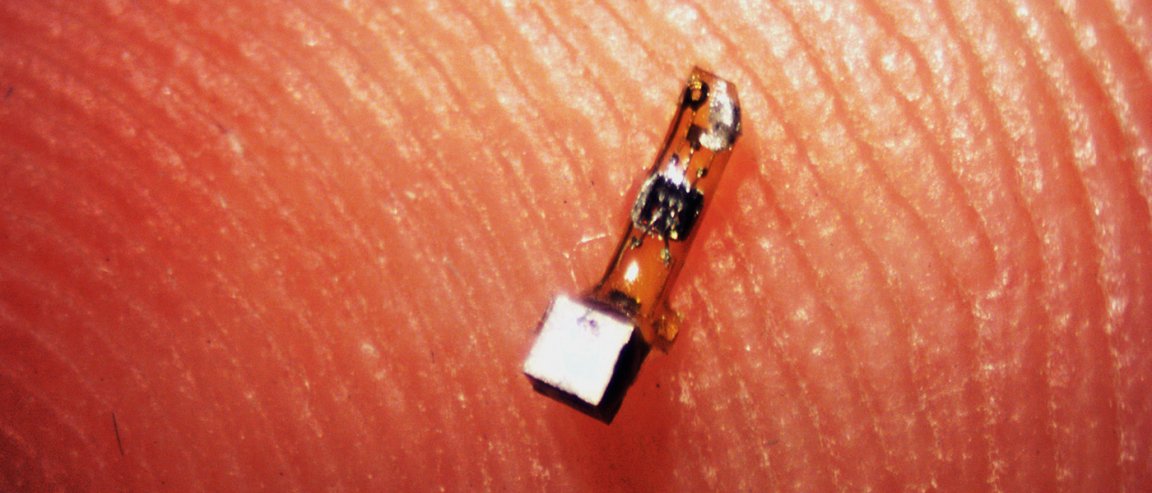
Small. Real Small.
Need to check someone’s vital signs? Most health monitoring processes require a bracelet or other wearable technology. Wearables are useful, sure. But, to quote Inception, we need to go deeper. That’s right. Tech that goes inside your body. Implants that directly monitor specific bodily activity.
Engineers from the University of California, Berkeley have created dust-sized, wireless sensors that will be key for micro-implants in the body, and real-time monitoring of specific nerves, muscles, or organs.

These sensors, called neural dust, are no more than 3 millimeters long, 1 millimeter high and 4/5 millimeters thick, allowing them to be easily parked beside a nerve or a muscle fiber. They use ultrasound to both power the sensors and read out their measurements.
A piezoelectric crystal converts ultrasound vibrations from outside the body into electricity to power a tiny, on-board transistor that is in contact with a nerve or muscle fiber. Voltage spikes in the neuron/fiber are picked up by the transistor and change the vibration of the crystal. This affects the echo detected by the ultrasound receiver. The change in echo allows determination of the voltage.
A Sprinkling of Dust
Beyond monitoring, the sensors could be used for active stimulation. They give rise to something dubbed “electroceuticals.” These electroceuticals would have the neural dust actively work on disorders like epilepsy, stimulate bladder control, or strengthen or dampen appetite suppression. Enough upgrades and they may even be used to control prosthetics. Current implantable electrodes degrade and pass through holes in the skull.
Planned upgrades to the sensors include further miniaturization, use of more biocompatible materials, improvement of the transmission and receipt of ultrasounds, and detecting non-electrical substances like oxygen or hormone levels.